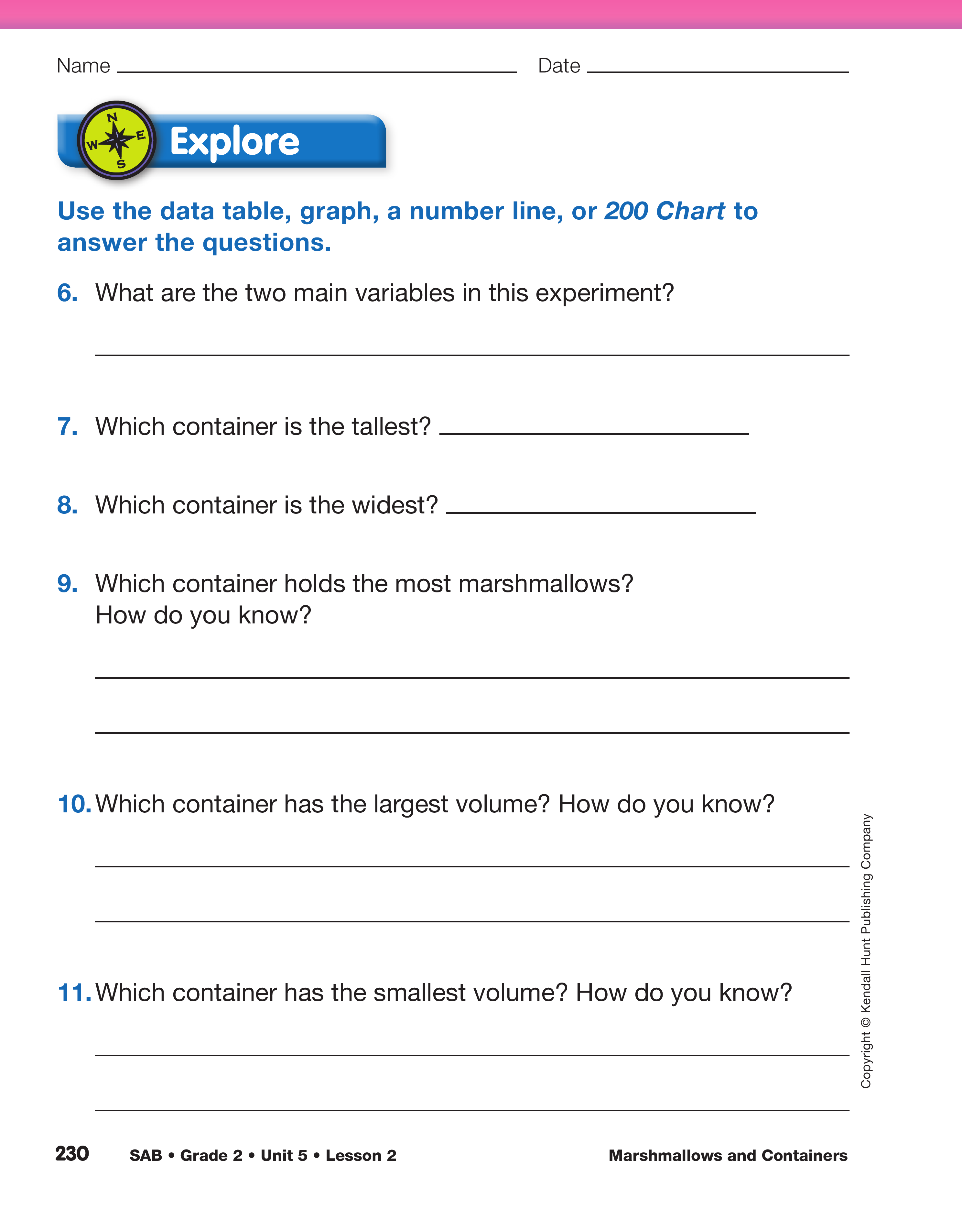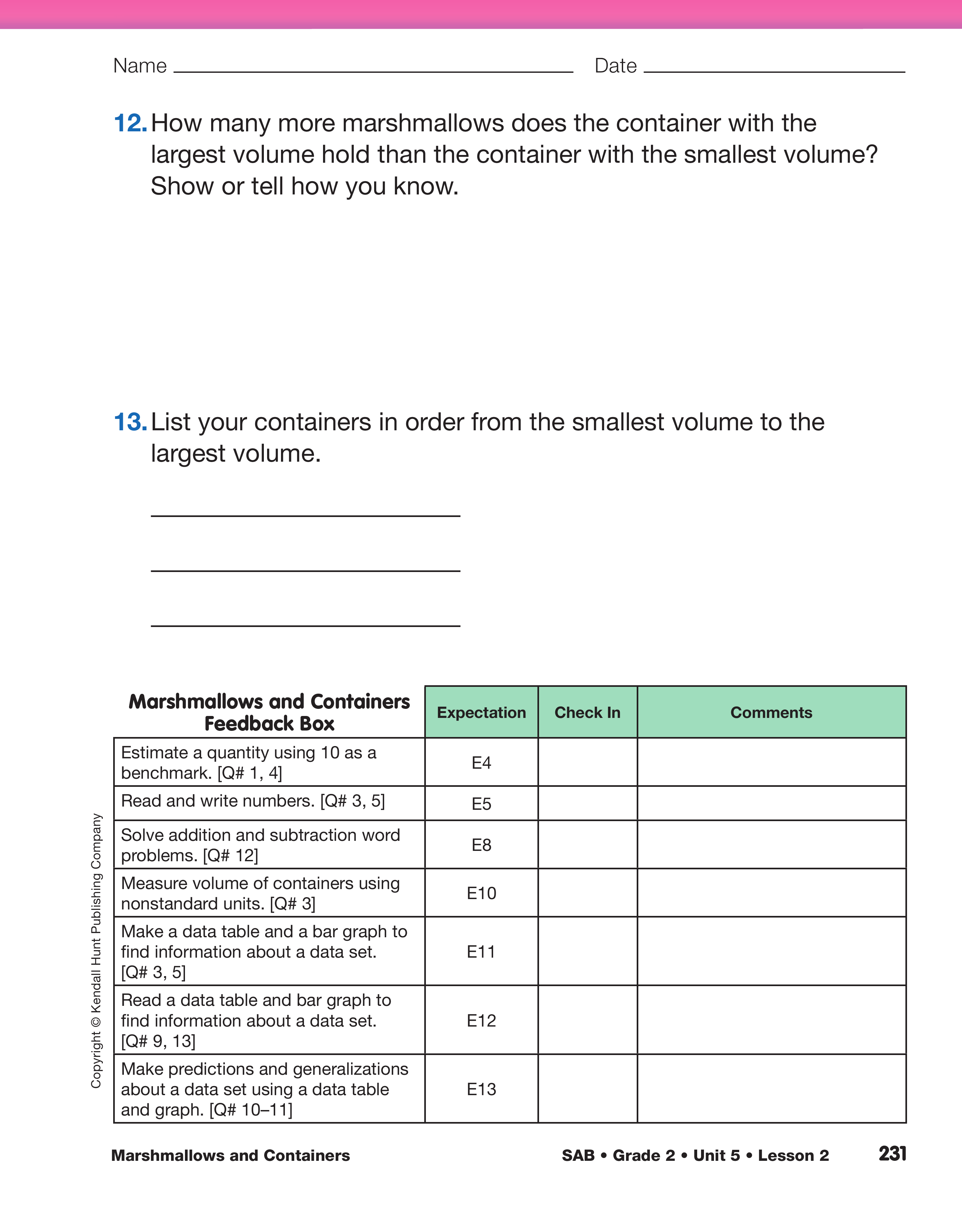Assign Questions 6–13 in the Explore section of the
Marshmallows and Containers pages to student
pairs. Students will analyze the data they collected
and explain how they determined which container
had the greatest number of marshmallows and the
largest volume.
After students have had time to answer the questions,
discuss the correlation between the container
that holds the most items and the container with the
largest volume.
- Which container holds the most marshmallows?
How do you know? (Answers will vary, but students
should refer to the data on their data tables
and bar graphs when responding.)
- Which container has the largest volume? (The
container that holds the most marshmallows has
the largest volume.)
- Which container holds the least number of marshmallows?
How do you know? (Answers will vary,
but students should refer to the data on their data
tables and bar graphs when responding.)
- Which container has the smallest volume? (The
container that holds the fewest marshmallows has
the smallest volume.)
Pose the following questions:
- Suppose you filled the containers with water
instead of marshmallows. Which container would
hold the most water? Which container would hold
the least water? How do you know? (The container
that held the most marshmallows would
hold the most water as well. The container that
held the fewest marshmallows would hold the
least amount of water. Volume is the measure of
the amount of space inside a container. Changing
the volume unit does not change the amount of
space inside the container.)
- Which container would have the greatest volume
in this case? (the same container that had the
greatest volume when using marshmallows)
- Which container would have the least volume? (the same container that had the least volume
when using marshmallows)
- How can you test your ideas? (Possible response:
We could fill the containers with water instead of
marshmallows and measure the water.)
- What if you filled the containers with sand? Which
container would have the greatest volume? (Again, it does not matter what the volume
unit is. The container that has the greatest amount
of space inside the container has the greatest
volume.)
Encourage students to refer back to the chart paper
to recall the predictions they made at the beginning
of the lab.
- Do your predictions agree with the data you collected?
- Were you correct about which container held the
most marshmallows?
- Are you surprised by the number of marshmallows
the tallest container holds? (Student responses
will vary. Possible response: I was surprised, then
I thought that it is like you take the margarine tub
and stretch it until it is tall like the cylinder and
the tub will stretch taller than the cylinder.)
- Was your estimate in Question 1 reasonable?














